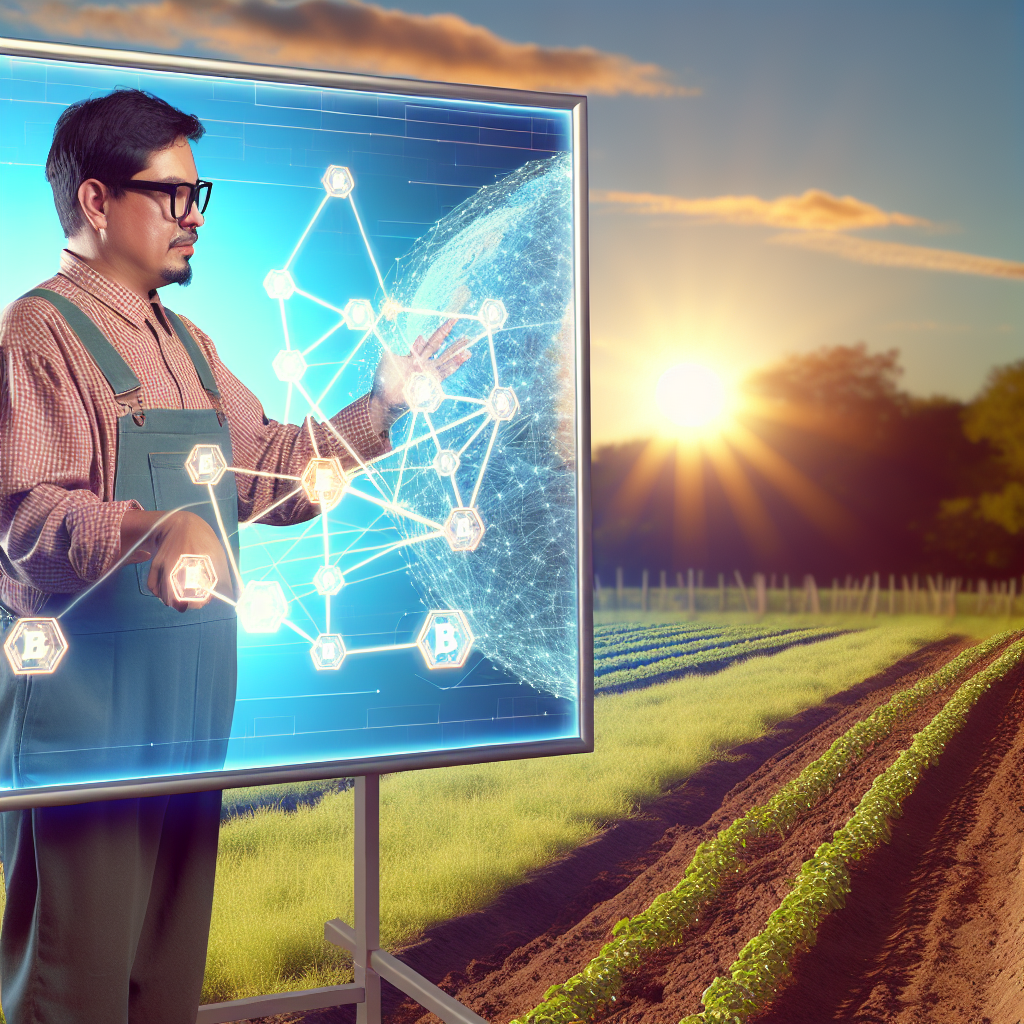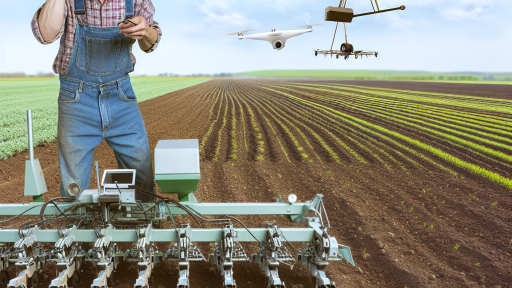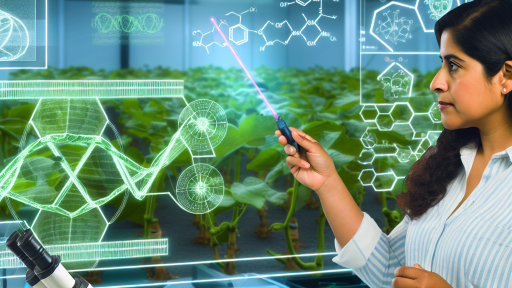Introduction to Blockchain Technology and Its Benefits for Farmers
What is Blockchain Technology?
Blockchain technology provides secure and transparent record-keeping.
It operates as a decentralized ledger for data shared across multiple computers.
This technology ensures data is immutable and tamper-proof.
Enhancing Trust and Transparency
Blockchain fosters trust among farmers and buyers.
Every transaction is recorded and cannot be altered afterward.
This transparency reduces the risk of fraud in agricultural markets.
Moreover, it allows consumers to trace the origin of their food.
Facilitating Direct Market Access
Farmers can connect directly to global markets through blockchain.
This eliminates intermediaries, leading to better profits for farmers.
Direct access enables farmers to negotiate prices more effectively.
Improving Supply Chain Efficiency
Blockchain streamlines supply chain management for farmers.
It offers real-time tracking of products from farm to market.
This visibility helps in minimizing delays and reducing waste.
Empowering Smallholder Farmers
Smallholder farmers often face challenges accessing markets.
Blockchain provides tools to help them participate effectively.
Transform Your Agribusiness
Unlock your farm's potential with expert advice tailored to your needs. Get actionable steps that drive real results.
Get StartedThis technology allows them to showcase their produce to a broader audience.
Consequently, smallholder farmers can increase their income potential.
Reducing Costs and Increasing Profits
By simplifying transactions, blockchain reduces costs associated with intermediaries.
Moreover, it enables farmers to track inventory better.
This, in turn, minimizes losses and maximizes profits.
Encouraging Sustainable Practices
Blockchain can promote sustainable farming practices.
Using data, farmers can optimize resource use and reduce waste.
This technology also helps in implementing eco-friendly initiatives.
Current Challenges in Accessing Global Markets for Farmers
Lack of Transparency in Supply Chains
Farmers often face opaque supply chains.
This lack of visibility leads to mistrust among stakeholders.
Consequently, farmers may not receive fair compensation.
Moreover, it hampers their ability to compete globally.
High Transaction Costs
Farmers encounter significant transaction costs.
These costs arise from intermediaries involved in the process.
As a result, profits diminish for farmers.
Additionally, high costs can discourage market participation.
Regulatory Barriers
Regulatory hurdles often restrict farmers from reaching international markets.
Compliance with various standards can be overwhelming.
This complexity can deter farmers from exporting their goods.
Furthermore, inconsistent regulations across countries create confusion.
Limited Access to Information
Farmers frequently lack access to vital market information.
This includes pricing, demand, and consumer trends.
Without this information, they cannot make informed decisions.
Consequently, many miss opportunities to sell their products effectively.
Showcase Your Farming Business
Publish your professional farming services profile on our blog for a one-time fee of $200 and reach a dedicated audience of farmers and agribusiness owners.
Publish Your ProfileInadequate Financing Options
Access to financing remains a challenge for many farmers.
Traditional banks often view them as high-risk clients.
This can result in limited credit options.
Without proper financing, farmers struggle to scale their operations.
Effects of Climate Change
Climate change poses significant risks to global agriculture.
Farmers face unpredictable weather patterns and natural disasters.
These challenges can devastate crops and reduce yields.
Consequently, farmers’ ability to access markets becomes further compromised.
How Blockchain Creates Transparency in Supply Chains
The Basics of Blockchain Technology
Blockchain technology offers a decentralized and immutable ledger system.
This structure ensures that all transactions are recorded transparently.
Every participant in a supply chain can access the same information.
Consequently, this technology fosters trust among stakeholders.
Tracking Products from Farm to Table
Blockchain enables precise tracking of products throughout their journey.
Farmers can register their goods at the moment of harvest.
Each transaction creates a permanent record on the blockchain.
Consumers can trace the origin of their food with ease.
This capability enhances food safety and quality assurance.
Enhancing Accountability and Reducing Fraud
Transparency through blockchain discourages fraudulent practices.
All transactions are time-stamped and verifiable by all parties involved.
This feature holds everyone accountable in the supply chain.
Moreover, it mitigates the risks associated with counterfeit products.
Building Trust with Consumers
Increased transparency leads to better consumer trust.
Consumers value knowing where their food comes from.
Blockchain provides the information they seek about sourcing practices.
As a result, purchasing decisions become informed and ethical.
Facilitating Fair Trade Practices
Blockchain can help ensure fair compensation for farmers.
Smart contracts automate payments based on predefined criteria.
This means farmers receive payment promptly when products are delivered.
Consequently, financial stress on farmers can be reduced significantly.
Improving Supply Chain Efficiency
By providing real-time information, blockchain improves supply chain management.
Stakeholders can respond to shifts in demand quickly.
Furthermore, streamlined operations cut costs and reduce waste.
In addition, businesses can optimize their inventory based on accurate data.
Supporting Sustainability Efforts
Through enhanced transparency, blockchain aids sustainability initiatives.
Farmers can demonstrate their sustainable practices clearly.
Consumers are more likely to support environmentally responsible brands.
Thus, blockchain can contribute to a greener farming ecosystem.
Delve into the Subject: AI Technologies Transforming Agriculture
Case Studies: Successful Implementation of Blockchain in Agriculture
Connecting Farmers in Kenya
In Kenya, farmers used blockchain to enhance transparency in coffee sales.
This initiative ensured fair trade practices were followed.
Showcase Your Farming Business
Publish your professional farming services profile on our blog for a one-time fee of $200 and reach a dedicated audience of farmers and agribusiness owners.
Publish Your ProfileBlockchain technology allowed direct connections between farmers and international buyers.
As a result, farmers received better pricing for their crops.
In addition, customers could trace the origin of their coffee.
Improving Supply Chain Transparency in India
In India, a blockchain platform was launched to track mango exports.
Farmers input data about their harvest into the blockchain system.
This system recorded every step in the supply chain.
Consequently, the process minimized fraud and waste.
Consumers gained confidence in the quality of their purchases.
Enhancing Cacao Production in Ecuador
Ecuador implemented blockchain to improve cacao traceability.
Farmers documented their cultivation practices on the blockchain.
This information helped them connect with premium markets.
As a result, they received higher payments for their quality cacao.
Furthermore, buyers appreciated knowing their product’s full history.
Streamlining Logistics in the U.S.
In the United States, a collaboration with tech firms improved logistics for vegetable growers.
Blockchain tracked every shipment to ensure efficiency.
This technology reduced delays and spoilage rates.
Consequently, farmers experienced increased sales and reduced losses.
Retailers also benefited from fresher produce on their shelves.
Supporting Smallholder Farmers in Africa
A project in Africa focused on empowering smallholder farmers via blockchain.
Farmers could access financing through a decentralized platform.
This accessibility increased their capacity to invest in better equipment.
Moreover, the platform connected them to global markets.
As a result, farmers reported improved productivity and income.
Discover More: Maximizing Farm Profitability With Innovative Agri-Fintech Solutions
Smart Contracts: Automating Transactions and Payments in Farming
Introduction to Smart Contracts
Smart contracts represent a revolutionary approach to automating farming transactions.
They use blockchain technology to execute agreements automatically.
Farmers benefit from improved efficiency and reduced costs.
How Smart Contracts Function
Smart contracts operate by storing rules and conditions on the blockchain.
When conditions are met, the contract executes automatically.
This eliminates the need for intermediaries, streamlining processes.
Transparency and Security
Blockchain technology enhances transparency in farming transactions.
Every action taken is recorded securely on the blockchain.
This reduces the risk of fraud and disputes among parties.
Real-World Applications
Many farmers and cooperatives are implementing smart contracts.
For example, organic growers can use them to verify product authenticity.
Moreover, they facilitate timely payments upon delivery, ensuring cash flow.
Benefits of Using Smart Contracts
Adopting smart contracts offers several advantages for farmers.
- Increased efficiency reduces operational delays.
- Cost savings come from eliminating middlemen.
- Improved cash flow ensures timely payments for goods.
Challenges and Considerations
Despite their benefits, smart contracts also present challenges.
Farmers must ensure access to technology and training.
Additionally, legal frameworks need to support their implementation.
Showcase Your Farming Business
Publish your professional farming services profile on our blog for a one-time fee of $200 and reach a dedicated audience of farmers and agribusiness owners.
Publish Your ProfileFuture Outlook
The future of smart contracts in farming looks promising.
As technology advances, adoption rates are expected to rise.
Consequently, farmers will likely see enhanced opportunities in global markets.
Learn More: The Future Of Crop Disease Detection Technologies In Agricultural Practices

Enhancing Traceability: Building Consumer Trust through Blockchain
The Importance of Traceability
Traceability is essential in today’s agricultural market.
Consumers increasingly demand transparency in their food sources.
Blockchain technology provides a reliable solution.
This technology enables farmers to share detailed product information.
Consequently, it enhances the overall trust in food supply chains.
How Blockchain Works
Blockchain records every transaction in a decentralized ledger.
This ledger is accessible to all stakeholders in the supply chain.
Farmers can input data about their products at each stage.
From planting to harvest to sale, every step is documented.
Thus, the entire journey of the product is verified.
Benefits of Transparency for Farmers and Consumers
Transparency encourages confidence among consumers.
With a clear product history, consumers feel more at ease.
They are more likely to purchase products with verified origins.
This trust translates into increased sales for farmers.
Moreover, it supports premium pricing for quality produce.
Real-World Applications of Blockchain in Agriculture
Several organizations are already implementing blockchain solutions.
For instance, AgriDigital enables grain farmers to track inventories.
They facilitate seamless transactions with buyers and sellers.
Similarly, IBM’s Food Trust helps trace food products from farm to table.
These initiatives showcase the power of blockchain technology.
Challenges and Considerations
Despite its potential, adopting blockchain presents challenges.
Many farmers lack the technical knowledge required.
Additionally, the initial investment can be a barrier.
However, education and partnerships can mitigate these issues.
As blockchain becomes more prevalent, future adaptation will likely follow.
Looking Ahead
The future of agriculture is increasingly linked to technology.
As more farmers embrace blockchain, transparency will grow.
This shift will likely reshape consumer behavior and expectations.
Ultimately, enhancing traceability benefits everyone involved.
Farmers, consumers, and retailers will thrive in a trusted environment.
Discover More: Environmental Impact Of Genetically Modified Agriculture
Collaborative Platforms: Connecting Farmers to Global Buyers
The Role of Blockchain in Agriculture
Blockchain technology revolutionizes the agricultural supply chain.
It provides transparency and traceability for every transaction.
This ensures that farmers can demonstrate the quality of their produce.
Additionally, it reduces the risk of fraud and misinformation.
Enhancing Market Access
Collaborative platforms allow farmers to reach global buyers directly.
Showcase Your Farming Business
Publish your professional farming services profile on our blog for a one-time fee of $200 and reach a dedicated audience of farmers and agribusiness owners.
Publish Your ProfileThese platforms eliminate the need for middlemen.
As a result, farmers can receive a fairer price for their products.
Furthermore, buyers benefit from a wider range of options.
Building Trust Among Stakeholders
Blockchain fosters trust between farmers and buyers.
Smart contracts enforce agreements automatically.
This reduces disputes and ensures that both parties fulfill their commitments.
Consequently, relationships within the supply chain become stronger.
Empowering Farmers Through Knowledge
Collaborative platforms often provide educational resources.
Farmers can learn about best practices and market trends.
By gaining knowledge, they can improve their yield and quality.
Moreover, informed farmers can make better business decisions.
Promoting Sustainability
These platforms encourage sustainable farming practices.
Farmers can share insights about eco-friendly methods.
Buyers increasingly prefer products that are sustainably sourced.
Thus, this approach benefits both the environment and market demand.
Challenges and Considerations
Adoption of blockchain in agriculture does face challenges.
Infrastructure and technological literacy are often barriers.
Additionally, the cost of implementation can be high for some farmers.
Nonetheless, partnerships and support can help overcome these hurdles.
Future Trends: The Role of AI and IoT with Blockchain in Agriculture
Integration of AI and Blockchain
Artificial Intelligence (AI) enhances blockchain technology in agriculture.
It analyzes vast datasets to improve decision-making processes.
Farmers can predict crop yields more accurately using AI algorithms.
Consequently, they can optimize their resources effectively.
Leveraging IoT Devices
The Internet of Things (IoT) connects various agricultural devices.
Sensors monitor soil moisture, temperature, and crop health in real-time.
This data provides actionable insights for farmers to make adjustments.
As a result, they can enhance crop quality and productivity.
Enhanced Traceability
Blockchain ensures data integrity and transparency in the supply chain.
With AI and IoT, farmers can track their products from field to market.
This traceability builds consumer trust and improves food safety.
Furthermore, it supports compliance with local regulations efficiently.
Market Access and Efficiency
AI-driven analytics can identify optimal market opportunities.
Farmers receive insights into pricing trends and demand fluctuations.
This information empowers them to make informed decisions.
Ultimately, it boosts profitability and market access.
Adoption and Future Considerations
Adoption of these technologies is on the rise worldwide.
Governments and organizations support initiatives promoting their integration.
Challenges remain, including technology costs and training needs.
Overcoming these barriers will be vital for widespread adoption.
As technology evolves, further innovations will likely emerge in agriculture.
Showcase Your Farming Business
Publish your professional farming services profile on our blog for a one-time fee of $200 and reach a dedicated audience of farmers and agribusiness owners.
Publish Your ProfileAdditional Resources
Agriculture’s technology future: How connectivity can yield new growth




